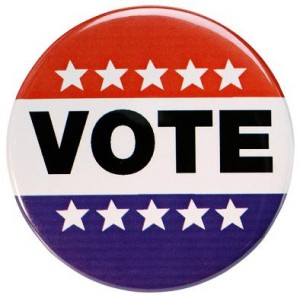 News stories about the problem of gun violence in America have dominated media outlets across the country over the past year. The tragic school shooting in Newtown, Connecticut continues to fuel an on-going debate about the laws surrounding violence and safety in our society. It’s a sensitive subject, and many people across the nation hold opposing viewpoints about what should be done. But one thing is clear: gun violence is a critical public health problem.
News stories about the problem of gun violence in America have dominated media outlets across the country over the past year. The tragic school shooting in Newtown, Connecticut continues to fuel an on-going debate about the laws surrounding violence and safety in our society. It’s a sensitive subject, and many people across the nation hold opposing viewpoints about what should be done. But one thing is clear: gun violence is a critical public health problem.
Gaps in evidence: Gun violence in America
The facts on Social Security
More than 75 years ago, the U.S. government created Social Security, the federal insurance program that provides benefits to individuals and their families who can no longer work because of disability, retirement or death. The program is complex, and its details are often debated among politicians.
Earlier this year, the Economic Policy Institute and the National Academy of Social Insurance published a guide that explains the facts about the Social Security program to young people. The document includes detailed, evidence-based explanations of Social Security’s history, beneficiaries, financing, and shortfalls. It pulls data from the Office of the Chief Actuary of the Social Security Administration, Congressional Budget Office, the Employee Benefits Research Institute, and the Center for Retirement Research.
Here’s a sampling of interesting facts from the document:
- In 2012, about 159 million individuals or 94% of the American workforce, worked in Social Security-covered employment. (Those not covered include government employees covered by other insurance programs, farm workers who do not meet minimum work requirements and students.)
- Approximately 55 million Americans received Social Security benefits in 2011. Seventy percent were retirees; 19 percent were disability beneficiaries and 11 percent were survivors of deceased workers.
- Without Social Security income, it is estimated that nearly half senior citizens would be living in poverty. Instead, fewer than 10 percent of seniors live in poverty.
- Because the U.S. population is aging and people are living longer, the Social Security program is projected to run up a deficit. The projected shortfall is 2.67% of taxable earnings over the next 75 years.
- There are a variety of ways to compensate for the deficit including raising taxes, expanding coverage, investing in equities, increasing the retirement age and reducing cost-of-living increases.
The guide concludes that Social Security fulfills an important need in our society as an insurance program for American workers. To learn more about Social Security benefits and about how your payroll taxes are used, it’s worth checking out this evidence-based document.
The science of political campaigns, Part 2
 Next month, President Barack Obama and Republican Presidential Candidate Mitt Romney will face off on national television on four separate occasions to share their ideas for governing America and explain why voters should chose them.
Next month, President Barack Obama and Republican Presidential Candidate Mitt Romney will face off on national television on four separate occasions to share their ideas for governing America and explain why voters should chose them.
While it’s not clear how many Americans make their voting decisions based on the debates, we do know they are an important part of the campaign. So I was thrilled to find some evidence on how to consider the candidates responses critically.
Todd Rogers, a behavioral psychologist at Harvard University, is among a growing group of researchers applying social science to issues effecting political campaigns. (We’ve written about his work on get-out-the-vote phone calls.) He wanted to address the issue of how candidates respond when get asked a question that they don’t want to answer – and whether the public notices when politicians dodge a question by talking about a different topic instead.
Rogers and his colleague Michael Norton, an associate professor at the Harvard Business School, designed a study to determine under what conditions people can get away with dodging a question, and under what conditions listeners can detect what’s happening.
In their study, published in the Journal of Experimental Psychology, they recorded a speaker answering a question about universal healthcare. Then they paired that answer with three separate questions: the correction question about health care, one about illegal drug use and another about terrorism. They showed the three question-and-answer pairings to separate groups of people and asked them to rate the truthfulness of the speaker.
Their research found that when the question and answer sounded somewhat similar – such as in the case where the speaker was asked about drug use but responded about healthcare – the audience rate the speaker as trustworthy. (In fact, most of the people who head the answer about illegal drug use couldn’t even remember the question.) But when the answer was very clearly addressing a different topic – such as when the speaker was asked about health care but responded about terrorism – the audience detected the dodge.
In another part of the study, Rogers and Norton used the same questions and answers, but posted the question on the screen in for some viewers. They found viewers who saw the question posted on the screen while the speaker answered were more than twice as likely to detect a dodge, even in subtle cases.
Rogers advocates for posting the questions on the screen during the presidential candidates debates, although he concedes it’s unlikely to happen this year.
You can hear an interview with Rogers and learn about other research on political campaigning in last week’s episode of NPR’s Science Friday.
The science of political campaigns
 The 2012 presidential candidates will spend billions of dollars to encourage people to vote for them this year. Independent analysts currently estimate that President Barack Obama and Republican nominee Mitt Romney will spend more than $6 billion in their campaigns. But how do they really know that money will bring them votes?
The 2012 presidential candidates will spend billions of dollars to encourage people to vote for them this year. Independent analysts currently estimate that President Barack Obama and Republican nominee Mitt Romney will spend more than $6 billion in their campaigns. But how do they really know that money will bring them votes?
It turns out there is an emerging cadre of researchers using scientific techniques – specifically the randomized controlled trial – to find out which campaign strategies actually bring people to the polls.
Among them are Todd Rogers, a behavioral psychologist at Harvard University, and David Nickerson, a political science professor at the University of Notre Dame. Together, they conducted a study in the 2008 Democratic primary in Pennsylvania that attempted to determine whether get-out-the-vote reminder calls made a significant difference in voter turnout.
For the study, Rogers came up with some questions that would ask people about their plans on voting day such as “What do you think you’ll be doing before you head to the polls on Tuesday?” and “Where do you think you’ll be coming from that day?” His theory – based cognitive psychology principles – was that these questions would plant a seed voters’ minds to helps them remember to vote.
The researchers used the questions in a randomized controlled trial. Some citizens received phone calls asking the questions, others received the standard get-out-the-vote call and others did not receive a phone call. They found a dramatic result: People who were asked the planning questions were twice as likely to vote as people who were not.
There are other examples of scientific studies applied to campaign strategies. Rogers and a colleague at Yale University found evidence that messages which tell people high turnout is expected are more effective at motivating voters than messages which emphasize low voter turnout.
And a review of field studies in get-out-the-vote campaigns found that many of these strategies improve voter turnout, but tend to mobilize well-represented groups of people and miss under-represented groups – effectively widening disparities in the electorate.
Here at EBL, we think it is great news that social scientists are applying scientific methods to the art of political campaigning – especially where so much money is involved. And we hope it’s information that candidates use in their campaigns.


